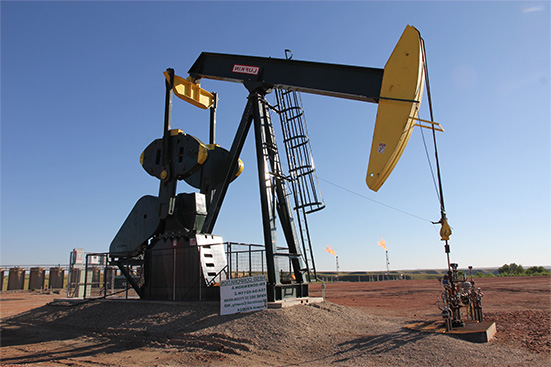
The energy transition is often portrayed as a rapid shift to renewable sources, but is that really the full picture? Let us break down where we really stand in the energy transition and what it means for oil and gas investors.
Understanding the Energy Transition
The global energy transition is often described as the shift from traditional fossil fuels like oil and gas to renewable energy sources such as wind and solar. This shift is driven by global goals to reduce carbon emissions and fight climate change. However, the transition is not as quick or straightforward as some might think. While renewable energy is expanding, fossil fuels continue to play a major role in global energy supply.
Investors in the oil and gas industry may wonder – where do we fit into this energy transition? The answer is clear – fossil fuels remain essential, and opportunities are many in this evolving landscape. While renewable energy is growing, oil and gas still provide over 80% of the world’s energy needs, and this demand is expected to persist for decades.
Contact DW Energy
Want to learn more about oil & gas investing? Our expert team can provide you with more information or schedule a consultation to talk about diversifying your investment portfolio.

The Role of Oil and Gas in a Changing Energy Landscape
One of the most critical insights for investors is that the energy transition isn’t a race to phase out oil and gas. Instead, it’s about finding a balance between traditional energy sources and renewables. Oil and gas companies are also adapting, with many investing in new technologies and sustainability efforts.
Take natural gas, for example – it’s known as a “bridge fuel.” Natural gas burns cleaner than coal and is seen as a transitional energy source that supports the shift toward lower-carbon alternatives. Many oil and gas companies are already investing in natural gas projects, making it a smart area for investors to watch.
Another factor to consider is the development of carbon capture and storage (CCS) technology, which aims to reduce the environmental impact of fossil fuel use. Companies investing in CCS can play a vital role in the energy transition, helping to meet emissions targets while still benefiting from the demand for oil and gas.
The Energy Mix: A Long Road Ahead for Renewables
Although renewables are growing fast, challenges like intermittency, storage, and infrastructure mean solar and wind aren’t ready to fully replace fossil fuels. For instance, energy storage technologies are not yet advanced enough to store renewable energy for long periods when the sun isn’t shining or the wind isn’t blowing.
For investors, this means that oil and gas will continue to play a central role in meeting energy demand, especially in industries that are difficult to electrify, such as heavy manufacturing, transportation, and aviation. Many of these sectors rely on oil and gas, and there are no immediate alternatives that can meet the same energy requirements.
Even as countries and companies increase investments in renewables, the demand for fossil fuels remains strong. As the energy transition continues, investors can benefit from a diversified portfolio that includes oil, gas, and emerging technologies.
Tips for Investors Navigating the Energy Transition
For those investing in oil and gas, here are a few key tips to keep in mind as the energy transition unfolds:
- Diversify your investments – Consider a balanced portfolio that includes both oil and gas as well as renewable energy projects. This allows you to benefit from growth in both sectors and mitigate risks associated with market fluctuations.
- Watch for innovation – Oil and gas companies are not standing still. Keep an eye on those investing in cleaner technologies, such as carbon capture, energy efficiency improvements, and natural gas developments. These companies are likely to remain competitive as the world moves toward a more sustainable future.
- Understand regional dynamics – Different regions are approaching the energy transition at different speeds. For instance, developing economies may continue to rely heavily on oil and gas, while wealthier nations may prioritize renewables. Understanding these dynamics can help you make informed decisions about where to invest.
- Focus on long-term growth – The energy transition is a long-term process. While renewables are making headlines, the transition will take decades, and oil and gas will continue to be in high demand throughout this period. As an investor, prioritizing long-term growth over short-term market trends can help secure steady returns.
The Future of Oil and Gas: Still Essential
Looking ahead, it’s clear that oil and gas will remain essential for the foreseeable future. While renewables are growing, they cannot fully meet global energy needs today. The International Energy Agency (IEA) predicts that oil demand will continue to grow in the coming years, especially in developing countries where energy demand is rising rapidly.
Moreover, the oil and gas industry is evolving in response to the energy transition. Companies are becoming more efficient, reducing emissions, and investing in new technologies to ensure their place in a cleaner energy future. For investors, this presents an exciting opportunity – by investing in forward-thinking oil and gas companies, you can be part of an industry that is adapting and thriving in the face of change.
The energy transition is a complex process, and while renewables are growing, oil and gas remain essential to the global energy mix. For oil and gas investors, this means there are still plenty of opportunities in the oil and gas sector, particularly in companies that are embracing innovation and sustainability.
As the world evolves, staying informed about traditional energy sources and their role in the future energy mix is key for making smart, long-term investment decisions. For detailed insights and analysis on how oil and gas are adapting to a changing market, visit our Insights page at DW Energy Group.
Contact dw energy
Sources:
“World Energy Outlook 2022,” International Energy Agency, https://www.iea.org/reports/world-energy-outlook-2022
“The energy transition: Where are we, really?” McKinsey & Company, https://www.mckinsey.com/industries/electric-power-and-natural-gas/our-insights/the-energy-transition-where-are-we-really
“Natural gas explained,” International Energy Agency, https://www.eia.gov/energyexplained/natural-gas/
“Electricity storage and renewables: Costs and markets to 2030,” International Renewable Energy Agency, https://www.irena.org/Publications/2017/Oct/Electricity-storage-and-renewables-costs-and-markets
“World Energy Outlook 2023,” International Energy Agency, https://www.iea.org/reports/world-energy-outlook-2023
“Energy Outlook,” BP, https://www.bp.com/en/global/corporate/energy-economics/energy-outlook.html
